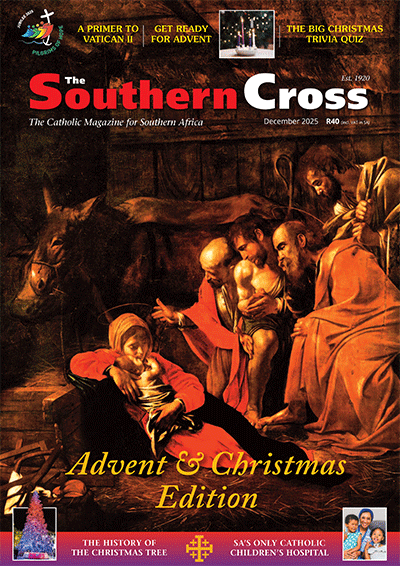Why Jesus went to hell
BY CHRIS BUSSCHAU
In a letter to the editor, reader Lou Corbitt (April 23) expressed discomfort with the new English translation of the Creed, in particular the section which reads: He descended into hell; on the third day he rose again from the dead.
The section quoted is not from the Niceno-Constantinopolitan Creed, as the reader has it, but from the Apostles’ Creed. The corresponding section of the Niceno-Constantinopolitan Creed reads: He suffered death and was buried, and rose again in accordance with the Scriptures.
Now, let’s move on to the wording Lou Corbitt quoted from the Apostles’ Creed and with which the reader is not happy. The Latin original for the passage in the Apostles Creed is Mortuus, et sepultis, descendit ad inferos, tertius die resurrexit a mortuis.
This is certainly not a new English translation. I have referred back to two documents, firstly my old Penny Catechism, which I used while in primary school between 1952 and 1958. It has the identical wording Lou Corbitt has quoted, and which is the wording used currently in the Missal.
I then went to a book of homilies by the great English Catholic academic, linguist and theologian Mgr Ronald Knox, best known for the excellent English translation of the Latin Vulgate version of the Bible between 1936 and 1950. In The Creed in Slow Motion (1949), he devotes two entire chapters to these words in the Apostles’ Creed.
Mgr Knox comments: He descended into hell, we say without thinking much about it. And what we normally mean by hell is a place or state are punished for all eternity. He goes on to explain that the Latin original contains the words ad inferos, meaning to down below, and not ad inferno, meaning into the fires of hell.
Those down below were, in Jewish terms, in Sheol (and you can see the link between that word and our modern English word hell), the place of the dead. To take it further, the Jews of Jesus’ time regarded Sheol as a sort of neutral state, and the Creed affirms the concept that Jesus, through his death on the cross, went to the many who were in that state of Sheol in order to redeem them to the fullness of the Kingdom of God.
So Lou Corbitt is correct in saying that the word hell as used in the Creed is different from our more common usage.
Having fulfilled the Old Covenant, redeeming those in Sheol, Jesus rose again from the dead.
So, the Apostles Creed gives us the ancient way of stating our belief that probably, in one form or another, formed the statement of belief until the Council of Nicaea in 325 when the more detailed Niceno-Constantinopolitan Creed was crafted and its successor, the Council of Constantinople in 381, when this masterful statement of faith was fine-tuned.
Both creeds are wonderful sources for faith and for meditation.
Lou Corbitt also poses a question about the priest’s prayer: Deliver us, Lord, we pray, from every evil This prayer, which we call The Embolism, has been part of the Mass since the earliest of times, and is present in both the Western and the Eastern churches. It is not an addition to the Lord’s Prayer it is a prayer to enable us to place the last words of the Lord’s Prayer in context.
It is followed by the doxology, for the kingdom, the power and the glory are yours, now and forever. This has been intentionally separated from the Lord’s Prayer in order to prevent the error of assuming that it is part of the prayer that Jesus taught us. It does not appear in any of the Gospels it was another additional prayer that first appeared in the Didache, the first Catechism written about 100 years after Jesus.
- When was Jesus born? An investigation - December 13, 2022
- Bishop: Nigeria worse off now - June 22, 2022
- St Mary of the Angels Parish puts Laudato Si’ into Action - June 17, 2022






